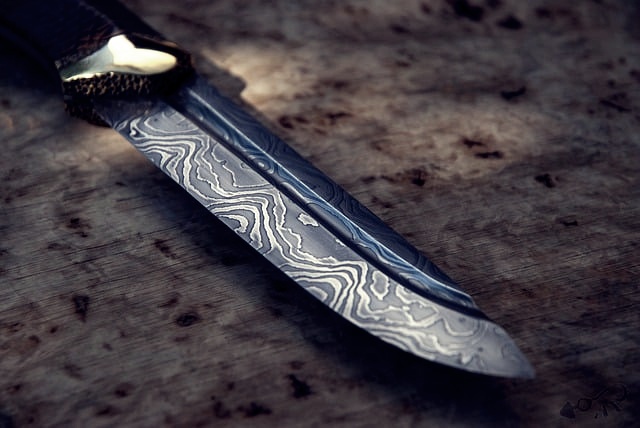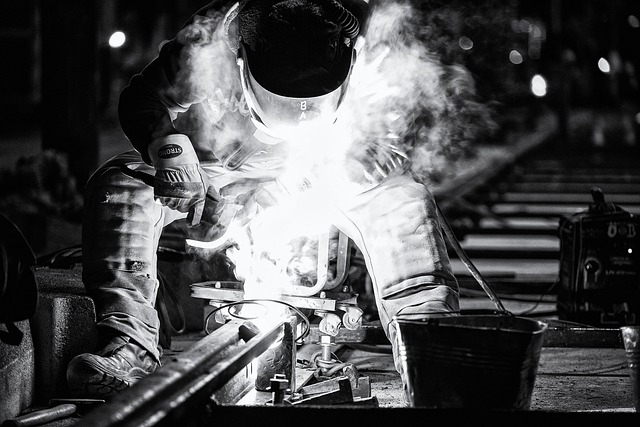The fabrication process of welding has developed into one of the most crucial industrial manufacturing processes in the history of humankind. Basically, it is a process in which two or more parts are fused together by means of heat, pressure, or both, forming a joint as the parts cool. Welding as a form of connecting two pieces of similar materials is usually used on metals or thermoplastics, and can also be applied to wood. The final welded structure is called a weldment. Over time, welding fabrication has become an undeniable force in the development of industrial society. We are using weldments, or welded products, in our everyday lives without even knowing it. The process of fabrication stands behind the existence of many items, such as everyday utensils, weapons, means of transport, buildings, artistic items, modern computers, and many others. Let’s take a closer look at the history and development of the welding process, with a focus on metals.
Welding in Ancient Times
The art of welding is said to have been around for more than five thousand years. Its history goes back to the Bronze Age and some even argue that it goes way beyond this time. The first metals found around the settlements of early men are gold, copper and silver. Archeologists have confirmed that Sumerians produced swords by hard soldering around 3000 BC. Other important findings from that era include artifacts, such as gold goblets and gold bowls, show signs of brazing. Around that same time period, Egyptians were the first to refer to so called “pressure welding” or “solid-phase” welding. They apparently heated iron ore in a charcoal fire, which reduced it to sponge iron. Its particles were then welded together by hammering. The first items to use iron and bronze forge welding in their creation around 1,000 BC led to the reputation of Damascus steel as one of the world’s greatest welded products of the early AD era of humankind.
The art of proper Damascus steel fabrication vanished over time, although many people in modern times achieved similar results with this type of steel fabrication. For the production of Damascus steel, iron components were first shaped, then heated in a forge to a high enough temperature for welding, and finally hammered or pressed together. Damascus swords and knives consist of wrought-iron bars that are hammered until thin, doubled back on themselves, and then hammered again to produce a forge weld. The more times this process was repeated, the tougher the sword. The evolution of the welding process then underwent slow development over time that was significantly marked by discoveries of many different types of metal and learning about their different qualities and characteristics.
The Century of Discoveries
Significant developments in the history of metal welding process came in the early 19th century when Sir Humphrey Davy (1778-1829) of London England, experimented and demonstrated the arc between two carbon electrodes using a battery in 1801, which became the predecessor of electric-arc lighting. More importantly, his cousin Edmund Davy discovered acetylene (C2H2) in 1836, which is a colorless gas that is still used for both welding and cutting materials.
It was at this time when the era of joining metals by fabrication began. New discoveries started springing up all over the world, with the most significant countries in the development of welding processes being Great Britain, France, USA, Russia and more. There were also many discoveries and inventions from other fields of science that strongly impacted the development of welding. One of the was the vulcanization of rubber, discovered by Charles Goodyear. This led to the development of rubber hoses for transport of welding gases. Electricity was also introduced, leading to production of the batteries.
Fusion Welding
In 1838, French inventor Comte de Richmond patented the process of fusion welding. Considered a basic type of welding today, it uses heat to join or fuse two or more materials by heating them up to their melting point. A filler material may or may not be required, depending on the materials to be joined. A new development in forge welding, the first in 3000 years, came about due to a highly increased demand for chains in the ship building industry. This new invention was the convex forge welding scarf, which proved to be extremely helpful in making metal joints stronger by reducing the presence of unwanted flux and swarf in the joint.
Resistance Welding
The first experiment of welding with electric current took place in the 1850s. It was the first example of heating material via internal resistance in order to produce a weld. Later in the 1890s, additional experiments resulted in perfection of the process and led to the discovery of what is nowadays known as “resistance welding”. This method of welding is used to join two pieces of metal together by running an electrical current through them. The electric current heats the surface of the metals to their melting points, enabling them to merge. Heat is generated though the electrical resistance of the metals, the contact resistance between them and the electrical current. No filler material is used. The necessary clamping force or pressure needs to be applied, so the components are held in place until the joint is solidified. There are many types of resistance welding, e.g. spot welding, seam welding, flash welding etc., with their current use spread across the car industry. Welding that incorporates the use of electricity to heat metal and create a joint between two components was successfully patented in the 1860s, which led to what we now know as “electric welding”.
Carbon Arc Welding
Within 1885 – 1887, Russian inventors Nikolai N. Benardos and Stanislau Olszewski patented their newest innovations, carbon arc welding and the electrode holder, in several European countries. The basis of this new welding process was in the oxidization of carbon at the carbon tip, which created CO2 at the arc for shielding. Both men used steam engines to turn the generator in order to produce the electricity required for the arc. The carbon arc method of welding became very popular at the end of the century and in the early 1900s. Other materials were used as electrodes over time, but carbon arc welding is still widely used in modern times.
In 1889, the first U.S. patent was granted for arc welding with a metal electrode. It was the very first case of carrying metal melted from an electrode across the arc and depositing this filler metal in the joint to make the weld. It served as the first welding process that used filler material. Two electrodes were used in this process, one carbon and one with filler material.
As advantages of the welding process started to be recognized all over the world, additional upgrades were introduced. However, further development of the welding process could only go as fast as other scientific fields that were also undergoing similar evolutions. It would not be fair to avoid the fact that around 1886 the first electric furnace for the production of aluminum alloys was installed - an important moment for development of the aluminum industry. In the following decade, argon was discovered - an inert gas that became very popular for its characteristics, such as a shielding gas during the welding process, making welds stronger and cleaner. Industrial mass production of acetylene was also invented in the US and made the gas more readily available. Consequently, the combustion of acetylene and oxygen was discovered in France and is still used today. In 1895,thermite welding was developed. Thermite welding is the process of igniting a mix of high energy materials, also called thermite, that produce a molten metal that is poured between pieces of metal to form a welded joint.
It represented another huge step for welding as an important fabrication process for many industries. Thermite welding is still used in modern times. For example, it is the main process for the production of railroad tracks and thus plays a crucial role in the modern history of transportation. Apart from these inventions and patents, welding as a manufacturing process was part of the population’s everyday lives, as shops producing tanks, casks and iron furniture started to flourish. In the late 1890s, boilers were widely used in U.S. households, despite the fact that fatal accidents caused by exploding boilers occurred on a daily basis. Development and perfection of welding processes thus led to higher safety and increased comfort. On the other hand, the first instances of blowtorches being used by bank robbers in Great Britain to gain access to bank vaults were being recorded. Like other inventions, welding introduced many new possibilities for humankind. Some were for the benefit of the public and some were for the benefit of the few.
Early 20th century
The history of welding and its importance as one of the major fabrication methods shifted gears in the first half of the 20th century for two reasons. First, the era of industrialization was on the rise, and second, WWI and WWII happened.
In the early 1900s, the first oxyacetelene torch was developed in France and the metal arc welding method was patented in the US, which started the metal arc welding industry in the United States. In 1907, the first variable voltage DC welding machines started to be mass produced. On year later, the first coated electrode was patented in Sweden, which kickstarted an almost twenty year period of research in reliable flux coated electrodes. The first coated electrode was made of bare iron wire dipped in thick mixtures of carbonates and silicites. The purpose of the coating was to protect the molten metal from oxygen and nitrogen, which affected the quality of the weld.
Initial industrial applications of plasma were introduced at that time. In 1910, a patent for brazing steel tubes was issued. First attempts to lay pipelines using oxyacetylene welding were carried out in the US. Welding quickly caught the attention of many industries, and in 1912, the first spot welded automobile body was made in Philadelphia, pioneering the later development of automatic welding processes in the car industry. Some of these processes are still utilized today.
When an electrode coated in blue asbestos was introduced to the world around this time, it was the only electrode that produced a metal weld without any impurities. In order to save time and money for simple horizontal welding, the firecracker welding technique was developed. Basically, it was a flux coated electrode placed horizontally above a close-fitting butt weld. An arc is struck at one end of the electrode, which then burns along the length of the electrode to create the weld joint. This method allows for fast and good quality welds up to 6.56 ft in length.
Sometime between 1915–1916, the first underwater cutting process was carried out, however, there was no interest in this new welding technique at the time and did not come to the attention of scientists until 1926.
The art of welding got its first major boost during WWI when the electric arc welding technique was established. Due to the lack of gas in Great Britain, it was the primary method for the production of bombs, mines and torpedoes. In turn, welders were in high demand and became praised members of the army. HMS Fullagar became the first fully welded hull vessel in service and the first manufactured during war time. After the war, about 109 German ships with boilers sabotaged by German soldiers were moved to New York for repair.
A team of engineers from a railroad company was given the task of repairing the boilers. The success of these repairs catapulted welding to the manufacturing and repair arena, and dashed its sordid past as a controversial operation. Afterwards, 500,000 troops were transported to the ongoing war in France by these repaired German ships.
Further developments took place during the 1920s. The alternating current was used for the first time in welding, but did not become popular until the 1930s. Various welding electrodes were introduced to the world – mild steel electrodes, higher carbon and alloy electrodes, copper alloy electrodes, etc. Automatic welding with a bare wire fed to the workpiece began to be used in the automotive industry. The first high pressure tubing was invented by Harry Bundy - an invention that introduced modern conveniences in our lives, such as refrigerators, air conditioners and many more.
Construction companies noticed many opportunities that welding applications could provide, leading to the first steel buildings built in the US in 1924. Fully welded bridges were then gradually built all around the world – 1928 in the US, 1929 in Poland and 1934 in Great Britain. Welding conferences started to be held and the industry was becoming more professional as the years passed. Welding symbols were also established. However, as the application of welding as a fabrication and manufacturing process rose in significance, many failures started to occur. Welds were unstable, brittle, and on many occasions, did not work as designed. These problems were the main driving force behind the invention X-ray tests for welds, a non-destructive test that contributes to the safety of welded products even today.
In 1930 the GMAW (gas metal arc welding) welding method was introduced for the first time. It was the predecessor of what is nowadays known as the MIG welding method. The Germans, driven by their lack of rare alloys, introduced a “hot gas” welding technique used for thermoplastic bonding of materials. Welded thermoplastics turned out to be very useful during WWII, as their bonds were strong and corrosion resistant. Other welding methods were also being developed prior to WWII, such as stud welding for fastening wood to steel, submerged arc welding used by shipyards during war time, shotwelding – another form of spot welding used in the construction of the first stainless steel train in the world, and the dip soldering method for the manufacture of printed wiring boards (PWB) used in electronic equipment, such as TVs, radios, etc.
In 1942, another great invention was patented by engineer Russ Meredith in the USA. He designed the gas tungsten arc welding (GTAW) for magnesium and stainless steel welding, a method that later proved to be the one of the best for aluminum welding. Nowadays, this method is also known as TIG welding, Argonarc, or Heliarc. It is probably the most significant welding process that has been specifically developed to date for the aviation industry.
Picture – welder welding aluminum
The Modern Era
The second half of the 20th century is marked by inventions of many welding processes and methods, together with their perfection. The demand for lightweight, yet strong, materials increased significantly over the years and the welding world had to respond to it.
1950s
The electron beam welding process was introduced in France. It is a fusion welding process in which a beam of high-velocity electrons is applied to two materials that are to be joined, usually in a vacuum. This process makes it possible to weld metals with high melting points, which is important for applications in modern day electronics. Another important process at work in the electronics industry was developed at the same time – wave soldering. In 1956, the friction welding process was presented in Russia. Friction welding is a solid-state bonding process that produces high integrity and full contact joints. By rotating one work piece relative to another, whilst under a compressive axle force, the friction generated between the two faying surfaces produces heat, causing the interface material to plasticize. Other welding processes that came to life during this decade are flux cored-arced welding, plasma arc welding, electroslag welding, pulsed arc welding, and more.
1960s
The first laser beam was produced using a ruby crystal for the Light Amplification Stimulated Emission Radiation (LASER). Explosive welding was then introduced – a solid state welding method that involves accelerating one of the components at a high speed with the use of chemical explosives. Although first discovered in Japan, gravity welding was introduced to industrial applications in Great Britain.
1970s
The first automotive production application of laser welding begins at General Motors Corporation in Dayton, Ohio, using two 1.25 kW CO2 lasers for welding valve assemblies for emission control systems.
1990s
In 1991, the TWI of Cambridge makes a huge leap in the world of welding by developing the friction stir weld (FSW) process. The original idea was patented in the Soviet Union in 1967, but the huge potential of this method was not realized until 1991. Friction stir welding is a solid- state joining process that uses a non-consumable tool to join two materials without melting them. Heat is generated by friction between the rotating tool and the material, which leads to a softened region near the FSW tool. While the tool is traversed along the joint line, it mechanically intermixes the two pieces of metal, and forges the hot and softened metal by mechanical pressure, which is applied by the tool, much like joining clay, or dough. It is primarily used on wrought or extruded aluminum and particularly for structures which need very high weld strength. New applications of this method have been further developed over time and friction stir welding represents a serious breakthrough in the history of welding. NASA was the first to use this method, when they welded a massive fuel tank for the Space Shuttle.
A New Millennium
Welding continues to develop in all aspects, as new methods are constantly being discovered and developed. The focus nowadays lies on safety of the production process and improvements in welding equipment.
Many testing bodies have been introduced to both check welding processes and train welding professionals. New materials are being welded together that are shaping the future of our lives. Wherever we are, at home, in a car, a plane, at school or at work, we cannot escape products that have been welded in one way or the other.
















